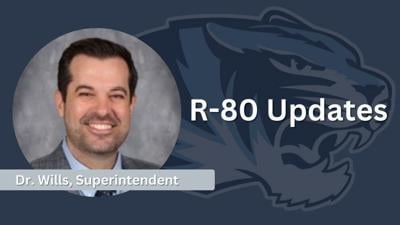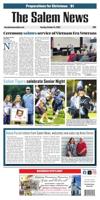If you step into a classroom in our district today, you’ll notice something distinctly different from what many of us remember growing up. Gone are the rigid rows of desks, the heavy textbooks, and the lessons that repeated the same way year after year. In their place, you’ll find students actively engaged—asking questions, solving problems, and applying what they learn in creative and meaningful ways.
Across our schools, learning has become an experience of doing, not just knowing. In one room, students might be building model bridges in science class; in another, they could be performing original plays in English or developing business plans for an entrepreneurship project. These hands-on experiences nurture curiosity, teamwork, and critical thinking—skills that will serve students well beyond their school years.
Technology plays a vital role in this transformation. Interactive whiteboards, digital tools, and Chromebooks allow students to collaborate, research, and create in ways that were unimaginable just a decade ago. Yet even as technology expands our capabilities, it does not replace the importance of strong teacher-student relationships. Instead, it enhances them—allowing teachers to personalize instruction and connect with students more effectively than ever before.
At the heart of our work is a simple but powerful goal: to help students become thinkers, creators, and problem solvers prepared for a changing world. When you visit our classrooms, you might see students brainstorming around a whiteboard, producing short documentaries, or coding their first computer games. You’ll also see teachers guiding rather than lecturing—asking questions that spark deeper understanding. This is what learning looks like today: engaging, relevant, and connected to the real world.
To ensure every child thrives in this environment, our buildings use a structured framework known as Response to Intervention (RTI.) RTI helps identify students who need additional support—whether in reading, math, or other skills—and provides it early and effectively.
• Tier 1 ensures all students receive strong, research-based instruction in the classroom.
• Tier 2 offers small-group interventions for students needing extra help.
• Tier 3 delivers one-on-one support tailored to individual needs.
Teachers continually monitor progress and adjust instruction as needed, ensuring that no student slips through the cracks. RTI is more than a process—it’s a reflection of our commitment to help every student succeed academically and emotionally.
Building on that commitment, Salem Middle School is piloting the District Continuous Improvement (DCI) framework, which guides our daily work. DCI ensures that decisions are based on evidence and student data, that effective practices are used consistently, and that each learner receives the right level of support at the right time. In short, DCI keeps us focused on one key question: How can we keep getting better for our students?
Through DCI and RTI, our teachers and support staff collaborate to make instruction more responsive, more engaging, and relevant. Families play an important role too, as active partners in each child’s growth and success.
Education today is about more than mastering facts—it’s about building skills for life. By combining innovative teaching, thoughtful use of technology, and strong systems of support, our district is preparing students not only for tests and grades, but for the challenges and opportunities that await them beyond graduation.
When we say that learning looks different today, what we truly mean is that it looks better—because it’s designed around what every child needs to learn, grow, and thrive.
















